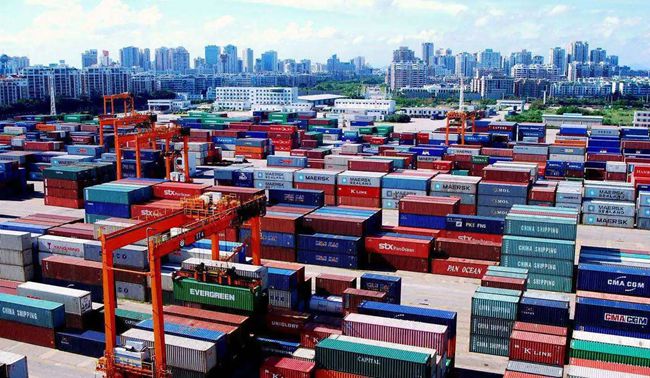The latest edition of UNCTAD's Global Trade Update report shows that total global trade reached a record $7.7 trillion in the first quarter of 2022, an increase of about $1 trillion year-on-year, but growth momentum will slow in the second quarter.
The WTO's annual global trade forecast, released in April, said the crisis in Ukraine jeopardizes already fragile global trade. So far this year, global trade growth momentum has weakened, so what is the next global trade outlook?
Global trade growth slows

The Global Trade Update reports that the value of global trade rose to $7.7 trillion in the first quarter of 2022, a record increase driven largely by higher commodity prices. By category, global merchandise trade reached $6.1 trillion in the first quarter, up about 25 percent year-over-year, while services trade was about $1.6 trillion, up about 22 percent. Regionally, merchandise exports from developing countries rose 25% year-on-year, while developed countries grew about 14%. Structurally, trade in the energy sector grew strongly, and trade in metals and chemicals also grew above average, while trade in the transport sector and communications equipment was below the levels seen in 2021 and 2019.
The report also said that due to the crisis in Ukraine to drive up prices, which in turn affects international trade, global trade growth is expected to slow down in the second quarter.
On April 11, the WTO secretariat released a report saying that the crisis in Ukraine has had a serious negative impact on the global economy and may lead to a significant decline in global trade growth this year. The report argues that the crisis in Ukraine has pushed up food and energy prices globally and hindered exports of Russian and Ukrainian products. The report also warns that global food prices are already at historically high levels due to the epidemic and other factors, and that the Ukraine crisis may exacerbate the global food security problem.
Zhou Mi, deputy director and researcher of the Institute of Americas and Oceania of the Ministry of Commerce Research Institute, said in an interview with International Business Daily that the development of global trade this year has been divided into two stages: First, before the Ukraine crisis, the development of global trade continued last year's recovery; second, after the Ukraine crisis, global trade has been adjusted, people's concerns about rising energy and food prices have led to market demand expanded, and the lack of market supply led to the rise in prices. Overall, in the Ukraine crisis and other factors continue to impact, the global trade recovery is still facing considerable pressure.
Facing a lot of uncertainty
So, what is the outlook for global trade this year, and what factors will be affected?

The WTO's annual global trade forecast report released in April concluded that the impact of the Ukraine crisis, world merchandise trade will grow by 3.0% in 2022, a growth rate lower than the previous forecast of 4.7%; the growth rate for 2023 is forecast at 3.4%.
The Global Trade Update report predicts that slowing global economic growth and the continuing crisis in Ukraine make the outlook for global trade gloomy. In the rest of 2022, rising interest rates, debt problems in many economies, and the phasing out of economic stimulus packages will likely have a negative impact on global trade, while commodity price volatility and geopolitical factors will continue to make global trade developments uncertain. In addition, the trend of regionalization of global supply chains and other factors such as policies to support the global economy's transition to green will also affect global trade this year.
Currently, the global economic recovery is still under great pressure. WTO economists based on simulation forecasts, the global economy at market exchange rates this year is expected to grow by 2.8%, down 1.3 percentage points from the previous forecast of 4.1%. 2023 global economic growth will rebound to 3.2%, close to the average growth rate of 3.0% from 2010 to 2019. And the latest edition of the International Monetary Fund's World Economic Outlook report, released in April this year, expects the global economy to grow by 3.6 percent this year, down 0.8 percentage points from the January forecast.
Zhou Mi said that looking ahead to the second half of the year, the outlook for global trade development still faces many uncertainties. There is a direct link with the subsequent progress of the Ukraine crisis, if the Ukraine crisis has eased, then the development of global trade may slowly return to the original development pattern, otherwise it may face greater pressure. In addition, the impact of the Fed's interest rate hike on global finance, as well as other possible geopolitical conflicts, will also add uncertainty to the adjustment and evolution of global supply chains, thus affecting the expectations of the real economy and the financial sector for the future. "Therefore, in the current environment, concerted efforts should be made to take measures to stabilize market and industry expectations, which in turn will provide effective support for global trade recovery."

